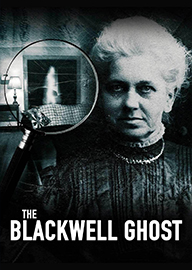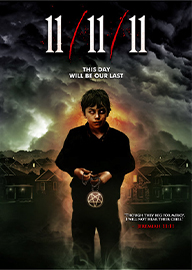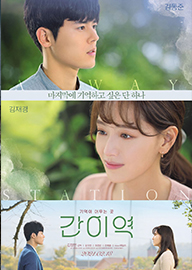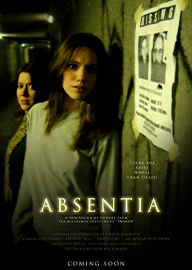Babycall AKA The Monitor
- 5.7
- Horror
- 2011
- 1h 36m
- PG-13
a haunting Norwegian psychological horror-thriller starring Noomi Rapace. Directed by Pål Sletaune, the film tells the story of a traumatized mother who, after escaping an abusive relationship, moves with her young son to a new apartment, only to experience unsettling events through a baby monitor. Blending themes of paranoia, maternal fear, and psychological instability, The Monitor is a chilling portrait of grief, trauma, and the blurred line between reality and hallucination, making it one of the most disturbing Nordic thrillers of its decade.












Comments
0Reviews
0Summery
1Please sign in to comment.
Please sign in to review.
The Monitor (2011), internationally recognized under its alternate title Babycall, is one of the most quietly unsettling psychological thrillers to emerge from the Scandinavian cinema tradition in the early 2010s. Directed by Pål Sletaune and anchored by a raw, heartbreaking performance from Noomi Rapace, the film fuses psychological horror with maternal drama, creating a story that operates simultaneously as a chilling thriller and a devastating portrait of trauma. Rather than relying on conventional horror tropes, it builds unease through atmosphere, ambiguity, and the painful emotional journey of a mother desperate to protect her child while haunted by forces both internal and external.
The narrative opens in stark tones, immediately positioning its protagonist Anna, played by Rapace, as a woman living on the edge of collapse. She is introduced as a mother fleeing an abusive relationship, taking her young son Anders into protective custody as they attempt to begin a new life in the anonymity of a large apartment complex. This new home is meant to be a refuge, a place where the shadows of her past cannot reach them, yet the cinematography and tone transform the environment into a space that feels alien, oppressive, and filled with unseen threats. From the very beginning, the film situates viewers inside Anna’s fractured psychology, where every sound, glance, and silence can carry ominous weight.
Anna’s maternal bond with Anders is at the center of the film. Traumatized by years of abuse, she exists in a state of hyper-vigilance, watching him constantly, fearful of letting him out of her sight. This paranoia is presented with empathy rather than judgment, showing how trauma warps protective instincts into something suffocating and obsessive. In a bid to extend her surveillance even while sleeping, Anna purchases a baby monitor, a seemingly mundane device that quickly becomes a symbol of her unraveling psyche. Through this monitor, she begins to hear cries, whispers, and sounds that suggest another child in danger within the building. Whether these cries are real, imagined, or supernatural is deliberately left ambiguous, pulling the audience into Anna’s uncertainty.
The monitor serves as the narrative’s portal into dread, linking Anna’s maternal instincts with the possibility of supernatural haunting or psychological projection. Late at night, as she sits alone, the disembodied sounds transform her protective vigilance into a spiral of paranoia. At first, the noises could be dismissed as interference, the bleed-through of signals from another apartment, but the persistence and clarity of the cries intensify, making it impossible for Anna—and the viewer—to ignore. Each sound echoes her deepest fear: that children are unsafe, that her own son may be next, and that she, despite her vigilance, may be powerless to prevent tragedy. As Anna begins to investigate the source of the cries, the boundaries between her perception and reality blur. She believes she is uncovering evidence of another child in danger, perhaps abused or neglected within the building, but her obsession with the baby monitor distances her further from the world around her. Authorities dismiss her fears as paranoia, friends and acquaintances pull away, and even Anders seems caught between affection for his mother and unease at her increasingly unstable behavior. This dynamic amplifies the film’s central question: are the horrors Anna perceives external threats, or are they manifestations of her trauma and psychological disintegration?
A secondary character, Helge, played with quiet nuance, emerges as a figure of tentative friendship. A kind but socially awkward man working in electronics, Helge helps Anna with her monitor and becomes a rare source of comfort in her isolated existence. Their connection provides a fragile glimpse of warmth in an otherwise cold and oppressive world. Yet even this bond is shaded by ambiguity, as Helge’s own life is marked by loneliness, and his role in Anna’s unraveling is left deliberately uncertain. Does he truly offer solace, or does his presence further destabilize her by reinforcing her obsessions? The film’s atmosphere grows increasingly oppressive as Anna’s fears escalate. She begins to see figures and images that may be hallucinations or ghostly visitations. Hallways darken into labyrinthine spaces of dread, mirrors reflect more than they should, and shadows seem to breathe. Yet Sletaune resists conventional horror jump scares, instead layering subtle disorientation that gnaws at the edges of perception. The audience, like Anna, is trapped in a liminal state where nothing can be fully trusted. Every encounter, every sound from the monitor, every fleeting image carries the possibility of being real—or the product of a damaged mind.
One of the most compelling aspects of The Monitor is its refusal to give easy answers. The cries Anna hears could be evidence of another abused child hidden somewhere in the apartment block, a symbolic projection of her own unresolved trauma, or a supernatural haunting. The film never settles definitively, instead letting ambiguity fester. This ambiguity is not a flaw but its greatest strength, for it forces the viewer into Anna’s perspective, where clarity is impossible and every interpretation carries equal weight. As the days unfold, Anna’s grip on reality weakens further. She begins to believe that her abusive ex-partner may have returned, that Anders is not safe even within the confines of their apartment. Scenes of domestic tension are presented with visceral intensity: the banging on doors, the silent waiting in the dark, the creeping suspicion that the enemy is already inside. At the same time, her connection to Anders shows strain. While she loves him with desperate ferocity, her paranoia begins to suffocate him, turning their relationship into one of fear as much as affection. He becomes not only the child she is trying to protect but also a mirror of her instability, responding with confusion and sadness to her spiraling behavior.
The climax builds not through spectacle but through psychological collapse. Anna is forced to confront the reality of her situation, yet the film maintains its haunting ambiguity even in its most intense moments. The baby monitor, which has been her lifeline and her torment, delivers its most disturbing revelations, amplifying her fear to a breaking point. By this stage, the audience is fully immersed in her fractured perception, unsure whether the cries are external or internal, whether Anders is truly safe or already lost, whether Anna’s desperate attempts at protection are saving him or endangering him further. The final act of The Monitor is devastating in its emotional resonance. Anna’s trauma, paranoia, and maternal love converge in a crescendo of confusion and horror. The film’s conclusion, like the rest of the narrative, refuses to deliver clear resolution, instead leaving viewers with a haunting sense of unease. Is Anna a tragic victim of trauma whose mind has betrayed her? Is she a mother caught in a supernatural battle to protect her child? Or is the truth somewhere between, an unbearable mix of both? The unanswered questions linger long after the credits, haunting the audience as effectively as the cries through the monitor haunt Anna.
Thematically, the film delves into the profound impact of abuse and trauma. Anna’s hyper-vigilance is not irrational but rooted in real suffering, showing how survival mechanisms can transform into destructive paranoia when the line between past and present blurs. It also explores motherhood with unflinching honesty, portraying the love between Anna and Anders as both beautiful and suffocating, a bond shaped by fear as much as affection. In doing so, it taps into universal anxieties: the fear of losing a child, the fear of being unable to protect those you love, and the fear that your own mind may betray you. Cinematically, The Monitor aligns with the best traditions of Scandinavian thrillers. Its bleak visual palette, minimalist score, and restrained pacing emphasize atmosphere over action, allowing tension to seep into every frame. Noomi Rapace’s performance anchors the film, her portrayal of Anna capturing both the strength of maternal love and the fragility of a psyche fractured by trauma. Her ability to convey vulnerability and fear while maintaining an undercurrent of fierce determination makes Anna one of the most compelling protagonists in contemporary psychological horror.
In the landscape of horror and thriller cinema, The Monitor distinguishes itself by rejecting clear genre boundaries. It is at once a ghost story, a psychological study, and a maternal drama. It resists resolution not to frustrate but to reflect the reality of trauma, which rarely resolves neatly. By immersing audiences in ambiguity, it creates an experience that is not only frightening but deeply empathetic, forcing viewers to live within the fractured mind of its protagonist. Ultimately, The Monitor (2011) is a haunting exploration of fear, trauma, and the fragile boundaries of perception. Its blend of psychological depth and horror aesthetics creates a film that lingers long after viewing, not because of what it shows directly but because of what it leaves unseen, unheard, and unresolved. It is a film about the impossibility of absolute safety, the corrosive power of paranoia, and the tragic weight of maternal love in the shadow of violence.